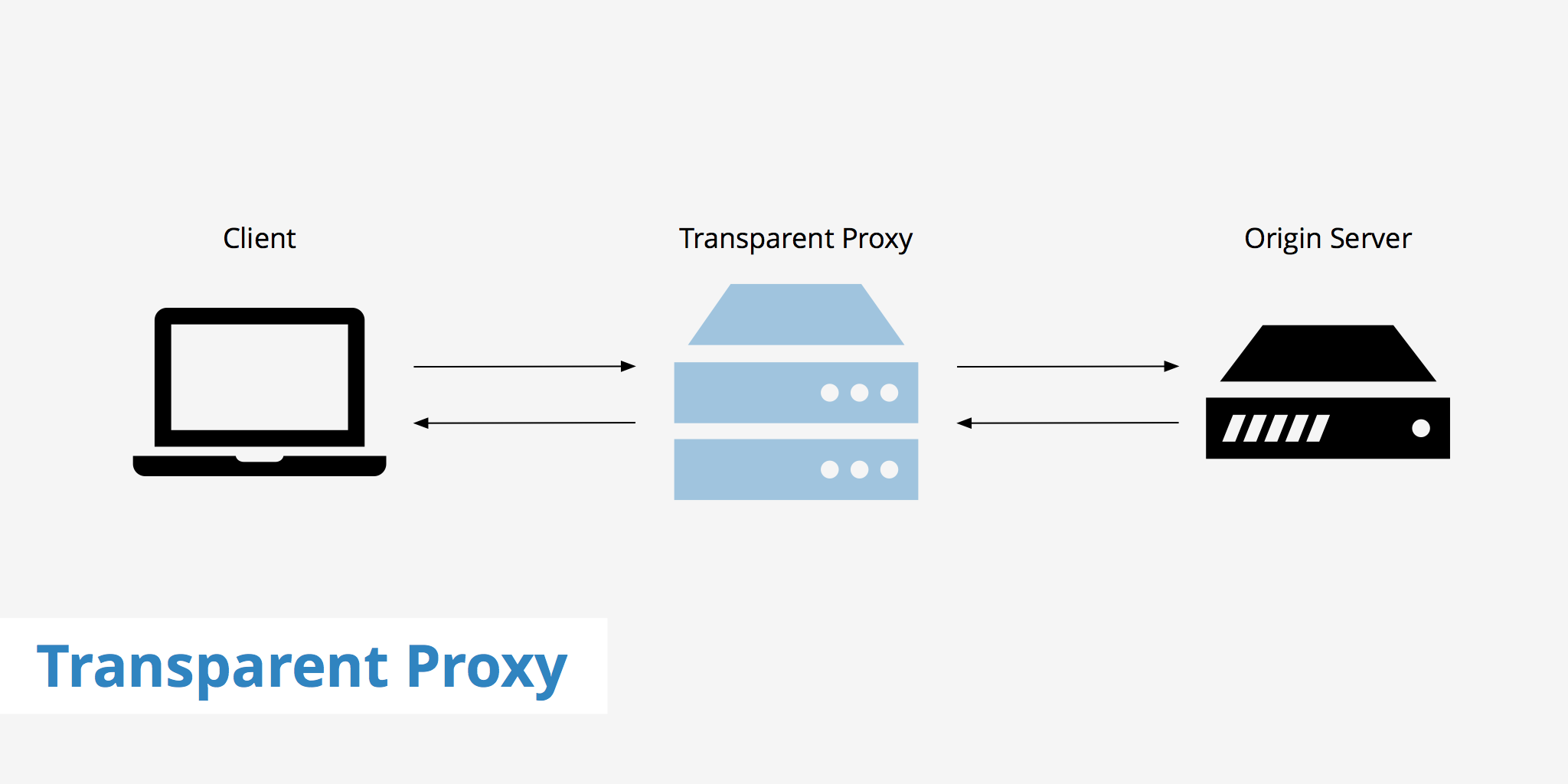Transparent Proxy

What is a transparent proxy?
A transparent proxy acts as an intermediary between the client and the web server and will intercept the client's request for caching, acceptable use, or authentication purposes. As the name implies, the proxy is transparent in that the client is unaware that their requests are being processed through a proxy before reaching the server. This type of proxy is commonly used within large organizations in order to facilitate consistent configuration on a large scale without needing to configure each client individually.
Why use a transparent proxy?
There are several reasons why a transparent proxy may want to be implemented. As mentioned, they are used primarily at large organization but are also present in the infrastructure of certain Internet Service Providers (ISPs) in order to reduce bandwidth usage by taking advantage of caching. Here are a few more scenarios that might arise within an organization that make the transparent proxy a useful tool.
- You want clients to use a proxy whether they want to or not.
- You want to set up a proxy without having to configure each machine manually.
- You don't want clients to know their requests are running through a proxy.
Although the transparency factor can be an advantage in keeping it unknown to the client that they are being proxied, there are a few ways to detect that a proxy is being used. Detecting a transparent proxy can be done in a number of ways including:
- Examining the traceroute for a proxied protocol (post 80) vs a nonproxied protocol (post 25).
- Comparing results of online IP checkers using HTTP vs HTTPS.
- Examining the response when trying to connect to an IP where there is known to be no server.
How transparent proxies work
Transparent proxies are fairly straightforward in the way they work.
- A user makes a requests to a web server.
- The request gets intercepted by the proxy and based on the proxy's rules, it will determine if the request can continue.
- If the user/request complies with the proxy's rules, the request continues to the server and the client receives a response for the data requested.
Here are a couple of different scenarios in which a transparent proxy may be used:
Content filtering proxy: These are often used in large organizations such as the government or corporations that want to restrict the use of certain websites to users. These proxies have the ability to produce logs based on user activity / URL's accessed and are primarily put in place to reduce the amount of user distractions.
Caching proxy: In this scenario, the proxy receives a request from a clients, fetches the information and then stores a copy of that information so that it can deliver it upon the next request. This saves resources that would otherwise be required from the origin server to deliver the response.
Summary
In summary, transparent proxies are quite useful when it comes to caching as well as mass overriding client settings. For large organizations and ISPs alike, they are quite valuable as configuring each client machine separately would take a great deal of time. For ISPs that need to save bandwidth, transparent caching proxies are a viable solution and also help improve web page response times.